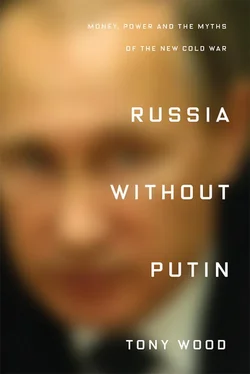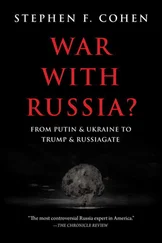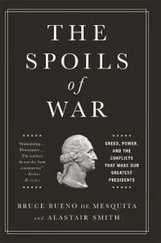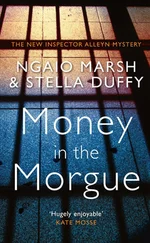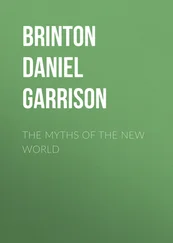The new century seemed to bring an abrupt break with the oligarch-dominated politics of the 1990s. Early in his presidency, in July 2000, Putin met with twenty-one of the country’s richest tycoons and reportedly spelled out new rules of the game: the state would now remain ‘equidistant’ from all business interests, and the latter would refrain from attempting to direct state policy. Those who abided by these rules could continue to enjoy their fortunes; those who did not, it soon became clear, would be expropriated and hounded out of the country. Gusinsky, whose media empire had been critical of Putin during the 1999–2000 election cycle, was forced to sell his prize assets and flee to Spain. Berezovsky, who had boasted of his role as Kremlin kingmaker in bringing Putin to power, soon followed: he quickly lost control of ORT, Russia’s main TV channel, and by November 2000 was in exile in the UK.
The anti-oligarchic turn seemed to gather pace dramatically in October 2003, when Russia’s wealthiest man stepped from his private jet onto the tarmac of Novosibirsk’s Tolmachevo airport, only to be handcuffed by a group of armed FSB men in black fatigues. Khodorkovsky spent the next ten years in prison, ostensibly for tax fraud, while his oil company, Yukos, was dismembered and then mostly absorbed by the state-owned Rosneft. The case sent tremors through the ranks of the Russian oligarchy: if Khodorkovsky’s assets could be seized, no one else was safe. It also prompted outrage in Western capitals and financial centres, which saw it as the first ominous sign of a coming re-nationalization of the Russian economy.
More portents of the same kind followed, from state acquisition of assets to a rise in the number of state representatives on the boards of private companies. Between 2003 and 2007, for instance, the Russian state went from owning the equivalent of 20 per cent of the country’s stock market capitalization to owning 35 per cent, and by 2006, according to the Financial Times , ‘11 members [of the Putin administration] chaired 6 state companies and had 12 further state directorships; 15 senior government officials held 6 chairmanships and 24 other board seats.’ {24} 24 David Woodruff, ‘The Expansion of State Ownership in Russia: Cause for Concern?’, Development and Transition , July 2007; Neil Buckley and Arkady Ostrovsky, ‘Back in Business – How Putin’s Allies Are Turning Russia into a Corporate State’, Financial Times , 19 June 2006.
If what had taken place under Yeltsin was ‘state capture’ – oligarchs effectively privatizing large chunks of the government apparatus – in the 2000s the boot seemed to be on the other foot, as the state laid claim to swathes of private enterprise; in effect, ‘business capture’. {25} 25 Alena Ledeneva, Can Russia Modernise? , p. 69.
Yet behind this apparent encroachment of the state into business, there was no fundamental turn against the principle of private profit. What changed under Putin were the sources of wealth, the identity of its individual holders, and the methods used to maintain and extend it. To begin with, for all the anti-oligarchic talk, there was no let-up in the creation of immense personal fortunes. Indeed, although Putin publicly promised that the oligarchs would ‘cease to exist as a class’ – a phrase with unmistakable echoes of the judgement Stalin had passed on the kulaks – the number of billionaires in Russia, according to Forbes , went from zero in 2000 to eighty-two in early 2008, on the eve of the global economic crisis. The downturn that followed trimmed their numbers somewhat, to fifty-seven in 2010, but by 2017 – even after several years of slow or negative growth and sanctions from the West – Russia had ninety-six billionaires. Over all this time, brazen displays of wealth multiplied, as Russian oligarchs lavished money on English football clubs, mega-yachts and palatial pieces of real estate. To the west of Moscow in particular, an area considered an elite enclave during Soviet times, the construction of opulent mansions and gated compounds carved more and more flashy holes in the forest.
The expanding ranks of the super-wealthy featured many new faces, and the fortunes of the Putin-era billionaires were based in different sectors of the economy from those of the Yeltsin years. This shift mostly took place after 2000, but its real origins lie in the rouble crash and debt default of 1998. The crash meant, first of all, that the advantage previously enjoyed by those with financial wealth began to evaporate. Smolensky’s SBS Agro Bank failed, while Potanin and Berezovsky were forced to dispose of assets. (Chubais did, though, think to let the oligarchs know in advance about the default, allowing them to spirit some of their cash overseas before the rouble lost a quarter of its value.) {26} 26 Reddaway and Glinski, Tragedy of Russia’s Reforms , p. 599.
At the same time, the currency devaluation boosted Russian domestic production by making imports more expensive, strengthening oligarchs with assets in manufacturing, agriculture, food processing and distribution, and so on. A new bankruptcy law passed a few months before the rouble crisis also proved significant in its wake: companies were allowed to seize assets in payment of debts, prompting a rash of bankruptcy suits and an accelerating debt roll-up. {27} 27 Barnes, Owning Russia , p. 170.
And in reducing the weight of Moscow-based financiers, the 1998 crash had an immediate geographical effect: a number of regional ‘financial-industrial groups’ formed in the mid-1990s weathered the storm better than many national-level concerns.
The surge in raw materials prices after 1999 hugely accelerated the reshaping of the Russian elite that began with the rouble crash. In 1997, only a few of the top ten oligarchs had interests outside banking or the media. After the turn of the century, almost all of the top ten owed their wealth to metals or mineral resources. A handful of players from the 1990s remained, but they tended to be precisely those with holdings in the newly buoyant sectors: aluminium magnate Oleg Deripaska, banker-turned-nickel baron Vladimir Potanin, metals and oil tycoon Roman Abramovich. Meanwhile, banking and media figures such as Berezovsky and Gusinsky were replaced in the 2000s by the likes of Aleksei Mordashov, owner of steelmaker Severstal; Vladimir Lisin, head of the Novolipetsk steel combine; and Mikhail Prokhorov, co-owner with Potanin of Norilsk Nickel.
Along with these sectoral shifts came changes in the social and demographic profile of the business elite, and a recalibration of the balance between ‘insiders’ and ‘outsiders’. As industrial and extractive concerns became more prominent in the 2000s, the predominance of Moscow decreased and the influence of industrial and resource-rich regions such as the Urals and Western Siberia rose. By 2007, only seven of the top forty oligarchs came from Moscow; most of the rest were from cities or smaller towns in the country’s vast hinterland. This signified a tilt, too, in favour of ‘insiders’: as domestic industry revived and natural-resource prices rocketed, the assets that had been seized a decade earlier by former factory managers, ‘red directors’ and members of the old apparat became highly lucrative, bumping their owners much further up the rich list.
At the same time, the weight and role of the state in private profit-making also underwent a mutation. But this did not happen because of a statist takeover or ‘business capture’. Instead, ‘insiders’ and, increasingly, state functionaries themselves turned the apparatus of the state – no longer in such disarray as it had been in the 1990s – into an instrument for private profit. That is, they were doing what the ‘outsiders’ had done in the 1990s, but from a different starting position: close to or inside the state. In fact, one of the striking things about the apparent ‘statist’ turn of the 2000s was the degree to which participants replicated the modus operandi of private companies in the 1990s. State-owned companies used the tax-avoidance strategies pioneered by the oligarchs, parking shares in offshore companies or routing transactions through intermediaries. Once again, this was accompanied by corrupt privatizations, asset-stripping, and threats of violence. In 2002, for example, there was a period when the state-owned oil company Slavneft had two chief executives, each equipped with a court order and a small private army. {28} 28 William Tompson, ‘Putin and the “Oligarchs”: A Two-Sided Commitment Problem’, in Alex Pravda, ed., Leading Russia: Putin in Perspective , Oxford 2005, p. 190.
Читать дальше
